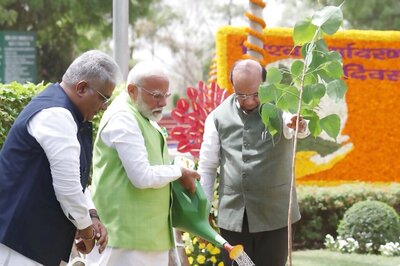
views
KOCHI: A year into its service, the Ro-Ro experiment is proving to be a big hit and not just economically. Saving more than 6,09,980 litres of diesel in a year, the success of the service has pinpointed the huge potential of a streamlined water transport system that leaves the environment less polluted. Ro-Ro barges are ferries designed to carry wheeled cargo such as automobiles, trucks, semi-trailer trucks and trailers. It was on February 17, 2011, that the Ro-Ro service connecting the Bolghatty Island and the Willingdon Island was started. The facility was set up by the Cochin Port Trust (CPT) in association with the Inland Waterways Authority of India (IWAI) to facilitate cargo movement between Willingdon Island and the International container Transshipment Terminal (ICTT), Vallarpadam.The terminals at Bolghatty and Willingdon Island were designed and constructed by the CPT with the financial assistance of `16.63 crore granted by the IWAI.“One year since the commencement of operation, the service seems to be a great success. It shows we should utilise our waterways in an effective manner because waterways are eco-friendly and cost saving. Projects of similar kind should be promoted,” said Cochin Port Trust traffic manager C Unnikrishnan, who conceived the Ro- Ro service project. Though the Ro-Ro terminal was commissioned in April 2010, the service began only on February 17, 2011, one week after commissioning the ICTT at Vallarpadam. Since then till February 15 2012, over 43,700 containers and trailers were transported via Ro-Ro service. That is, an average of 120 container lorries are being transported a day between Willingdon Island and Bolghatty island via waterways. Of these, maximum number of wheeled cargo was transported during June 2011. The average number of container lorries a day in the month was 300.“At a rate of three kilometres a litre, each of those vehicle has saved 14 litres of diesel by avoiding transport via city roads. Considerable fall in the amount of smoke emitted and traffic congestion should also be considered. The total saving in terms of diesel comes around 6,09,980 litres,” Unnikrishnan said. “In future, the Ro-Ro facility can be extended to Aroor, which is considered to be the gateway to Kochi. Since Aroor is a hub of sea food processing units, transportation via waterway will be viable,” he added.




















Comments
0 comment